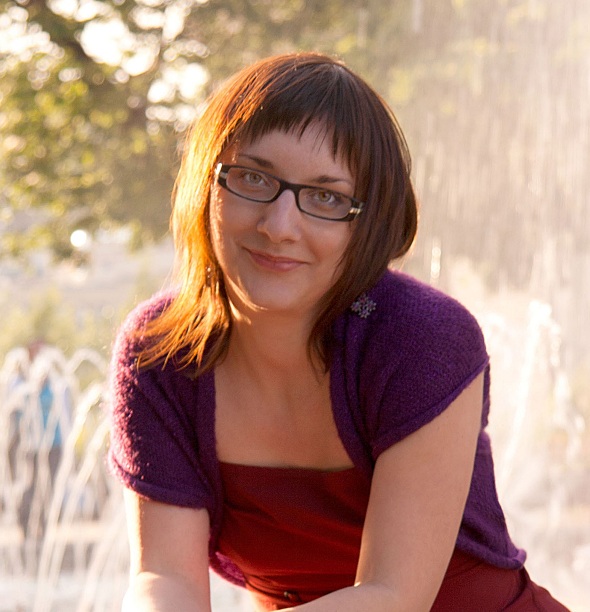By Rebecca Martin
Dancehouse, Melbourne’s centre for independent contemporary dance, has appointed Angela Conquet as its new artistic director and chief executive officer. With her passion for contemporary dance and a vision for its development, backed by her success as artistic director for dance at Mains d’Oeuvres Paris, Conquet looks set to enhance the vibrant community of Dancehouse and enrich the local dance scene.
Conquet, who steps into the shoes of David Tyndall, Artistic Director of Dancehouse since 2007, spoke with Dance Informa about her new role.
Congratulations on your appointment as AD of Dancehouse. How are you settling into your new position?
Very well so far. I’m enjoying every bit of my new life. The venue and the team are great, the artists I have met are very interesting and there are many challenging new projects to be launched soon, so it’s all very exciting.
You come to Dancehouse after a successful stint as AD for dance at Mains d’Oeuvres Paris. Tell us a bit about your time there and the role Mains d’Oeuvres Paris played in the French arts scene.
Mains d’Oeuvres is an independent multi-arts centre in the North of Paris and a pioneer of what is now known as the “movement of new territories of art” (disused spaces repurposed into art spaces). It is a working space for artists of all fields and particularly in dance. We mainly focused on supporting emerging artists, who, in France, rarely benefit from any funding scheme. We tried to invent a new relationship between the artists and their work, the venue and the surrounding community, inviting the artist to think of new ways for delivering the art to new audiences. I think Mains d’Oeuvres is now a highly creative incubator where people go to discover new art forms, new names, and new ways of sharing the arts with an underlying conviction that arts do push us to more creative living.
 What are some of the main differences between the Paris and Melbourne dance scenes?
What are some of the main differences between the Paris and Melbourne dance scenes?
The Paris dance scene is richer as there are some 300 professional dance companies based in Paris. There are many venues presenting dance on a regular basis and always some flagship artists to see. But not everyone manages to have access to funding or visibility and many talents are worn out before they succeed. Sometimes it may look like a mere jungle for those who are new. The main difference between Melbourne and Paris, as far as I can tell for the time being, is that here I have a feeling that the dance community is very closely-knit, more like a family and that there are more opportunities to explore their potential.
What are some of the main similarities between the two?
I’ve noticed that dance artists, on any side of the world, are genuinely concerned with today’s issues in society, and their works mirror that in a very profound way. It is because dance is the most universal art form with a unique power to translate political, social or philosophical issues with the moving body.
Tell us about your vision for Dancehouse
I see Dancehouse as a tool for the artists that, I imagine, is flexible and responsive to their wishes and needs. I would like to create a thoroughly supportive space where dance makers can explore their potential to the full, be aesthetically and philosophically groundbreaking, and fearless. And since there is so much talent here, I would like to connect Dancehouse to wider international networks and create new meaningful partnerships where exchange and reciprocity would be at the core. Ultimately, I aim to strengthen Dancehouse’s position as a seedbed for challenging art and invent the right bridges to bring it to wider audiences.
What challenges do you perceive there being with modern/contemporary/independent dance both locally and internationally?
I think the challenges are the same everywhere when we speak about independent dance. Dance artists cannot do without the time, the access to space and some serious funding. We cannot create dance pieces like we make sandwiches, so venues like Dancehouse must do their best to secure that timeframe. Dance is the most ephemeral of the arts, so I am very concerned about how to extend the life of existing works and how to make sure that they reach all possible audiences when the work is there and ready to tour. I would also like to think that we act as a catalyst for all these creative minds. Probably because I strongly believe in Josef Beuys’ concept of social sculpture, I like to think that we can change people’s lives with dance.
What do you miss about France?
Some bookshops and nice cafes, the TV-channel ARTE, a few wines I can’t find here and the foie gras of course, which is impossible to smuggle into this country.
What don’t you miss about France?
The hectic-ness of Paris, the sullenness of people, the metro in the morning…
Top photo: Angela Conquet, by Alfred Mrozicki

















